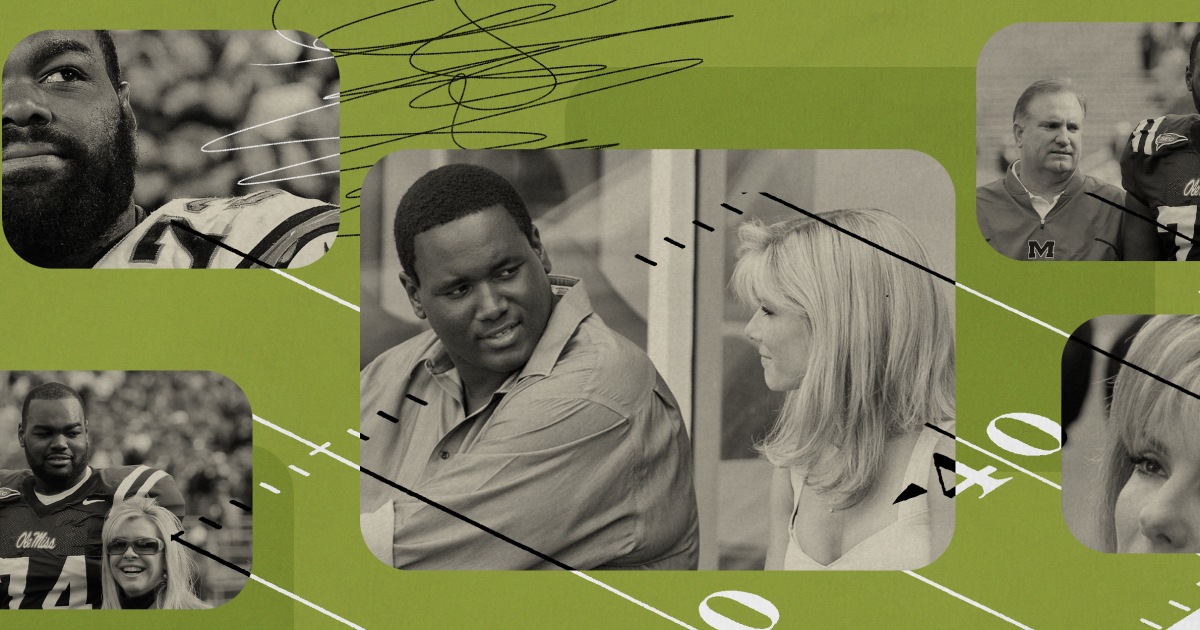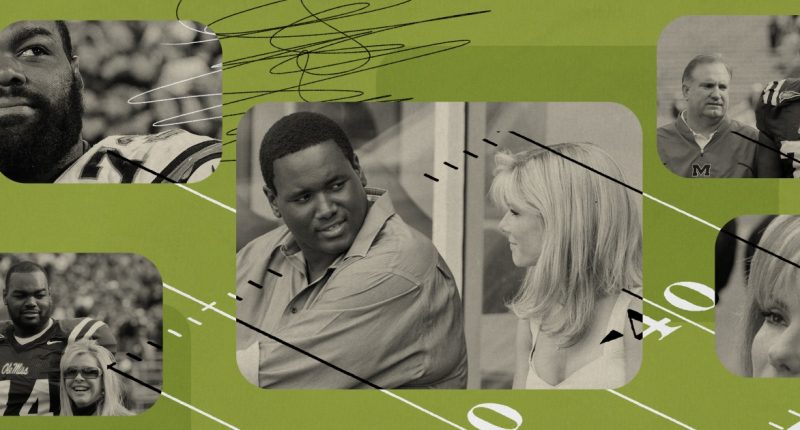
The legal battle between former NFL star Michael Oher and the white Tennessee family who took him in, as portrayed in the fictionalization of their lives in the 2009 movie “The Blind Side,” has renewed conversations about a common film trope: the white savior.
When “The Blind Side” hit theaters, it was hailed as both a true story steeped in “goodness” and criticized as racism cloaked in a tale about benevolent white people. Now, as Oher claims that Leigh Anne and Sean Tuohy misled him and used him for fame and fortune, experts are pointing to the allegations as real-life consequences of white savior films.
“The fact that this lawsuit is even being talked about is reflective of the central place white savior narratives have in our culture,” said Matthew Hughey, a sociologist and the author of “The White Savior Film.”
Oher filed a petition with a Tennessee court on Monday to end a conservatorship that he alleges the Tuohys tricked him into under the guise of adoption. He has been under the conservatorship since he turned 18, and now, at 37, he said he had only recently learned that the arrangement does not create familial ties. He alleges the Tuohy family made hundreds of thousands of dollars as part of the deal they negotiated for his life story, while he was paid nothing.
The Tuohys have denied Oher’s claim that he never received any money, and Marty Singer, a lawyer for the family, called Oher’s lawsuit a “shakedown effort.” Another lawyer for the Tuohys, Randall Fishman, said Wednesday that Sean and Leigh Anne will consent to end the conservatorship.
The popular Hollywood trope rests on a white protagonist who swoops in to rescue a Black — or other nonwhite — character from circumstances like poverty or overt racism. Critics have long pushed back against claims that such films are simply feel-good stories, because this narrative works to make stories of exploitation palatable while sending a message about the inherent superiority of white people. Hughey says “The Blind Side” is no different.
“It’s a common theme in which the Black person being saved has to be almost rescued from Blackness itself. The message is, ‘The closer to whiteness you become, the more your problems are solved,’” Hughey said.
“White savior films are particularly attractive or even seductive for a lot of white people who want to think of themselves as a good white person yet not really have their own whiteness or the racial order interrogated too deeply,” Hughey added.
The Oscar-winning film, starring Sandra Bullock as Leigh Anne Tuohy, chronicles Oher’s life as a homeless child who ends up living with the Tuohys and eventually plays college football at the University of Mississippi. The movie is based on Michael Lewis’ 2006 book, “The Blind Side: Evolution of a Game.”
This isn’t the first time Oher has spoken out about the film itself. He wrote in his 2011 memoir, “I Beat the Odds,” that he felt the movie portrayed him as “dumb,” rather than “a kid who had never had consistent academic instruction.” And, he continued, the movie implied he knew little to nothing about football before he met the Tuohys when, in reality, he’d been playing and studying the sport since he was a child.
“Quinton Aaron did a great job acting the part, but I could not figure out why the director chose to show me as someone who had to be taught the game of football,” he wrote. “I knew more people were going to watch the movie than read the book and I really didn’t want them to think I was someone who was so clueless about something I had always taken pride in being pretty smart about.”
Robyn Autry, a sociology professor at Wesleyan University, said Oher’s criticism of the story had not been taken seriously, which, she said, is a common consequence of white savior films.
“There’s more investment in the story and the narrative than in the person that it’s about,” she said. “It’s like the impact of the fairytale mattered way less” to the audiences who fawned over the film.
White savior narratives have been a fixture in film since the medium was first created, Hughey said. He pointed to 1915’s “Birth of a Nation,” directed by D.W. Griffith, as the first in a long line of movies that portray white people saving Black people from themselves — and, in the case of “Birth of a Nation,” protecting white people from Black communities. In more recent decades, though, movies like “To Kill a Mockingbird” (1962), “Glory” (1989), “Dangerous Minds” (1995), “Blood Diamond,” (2006), and “Green Book” (2018) have all been dubbed white savior films.
In 2009, critic Melissa Anderson wrote in the Dallas Observer that “The Blind Side,” peddled the “most insidious kind of racism,” one in which white people “are virtuous saviors, coming to the rescue of blacks who become superfluous in narratives that are supposed to be about them.”
“The filmmakers would like to lull you to sleep with this milk of amnesia, hiding behind the fact that this bewilderingly condescending movie is based on an actual person — but one who you end up knowing almost nothing about,” Anderson concluded.
Whether these stories are rooted in truth or not, Hughey holds, this trope has consequences that extend far beyond the big screen. He noted that the D.W. Griffith film is partly responsible for the Ku Klux Klan’s pattern of burning crosses, as the group had no history of burning crosses in the country until it was depicted in “Birth of a Nation.”
“Films are incredibly important,” he said. “They not only reflect our realities, but they can provide a template or even a kind of prophecy for what people think will be or should be.”
Autry agreed, noting that narratives about morally superior white saviors who take Black people under their wings says a lot about race relations in America.
“It gives people a sense of false optimism and hope about race relations that are predicated on this savior trope. But that’s not how social change happens. So it ends up being destructive and distracting,” she said, adding that these films allow white people to “absolve” themselves from the harms of quotidian racism.
“It functions as a sentimental understanding of something that is actually a lot more complex. It simplifies what the problems are, and it simplifies what the solution might be.”
Source: | This article originally belongs to Nbcnews.com









